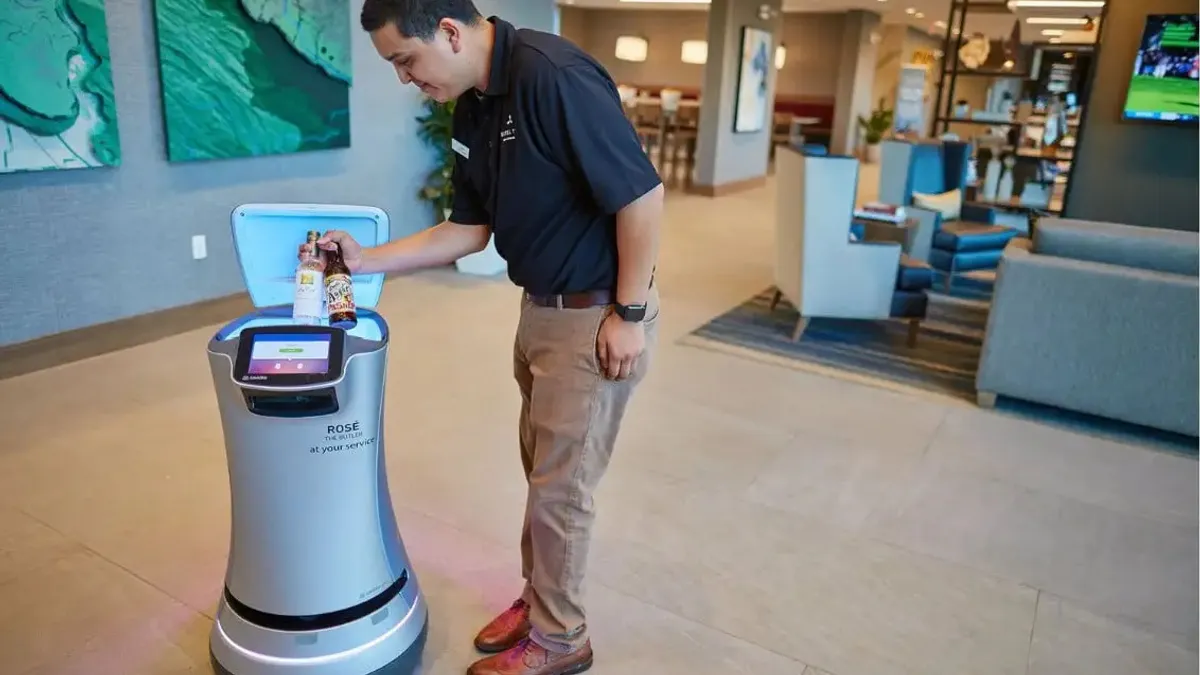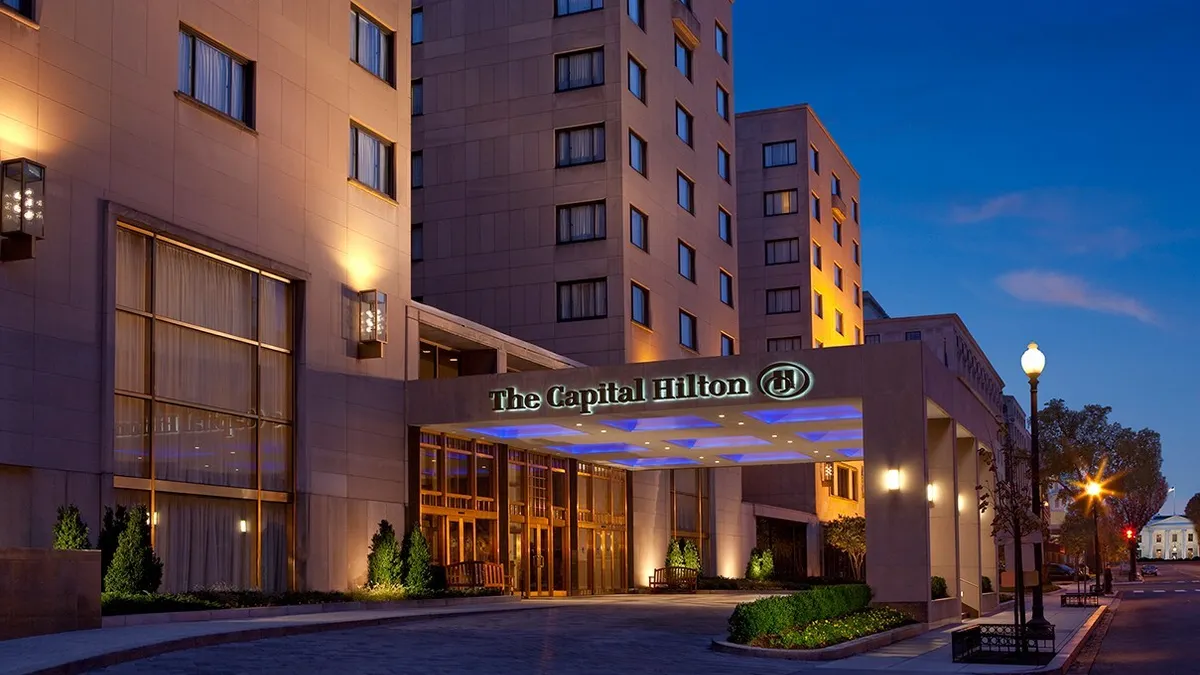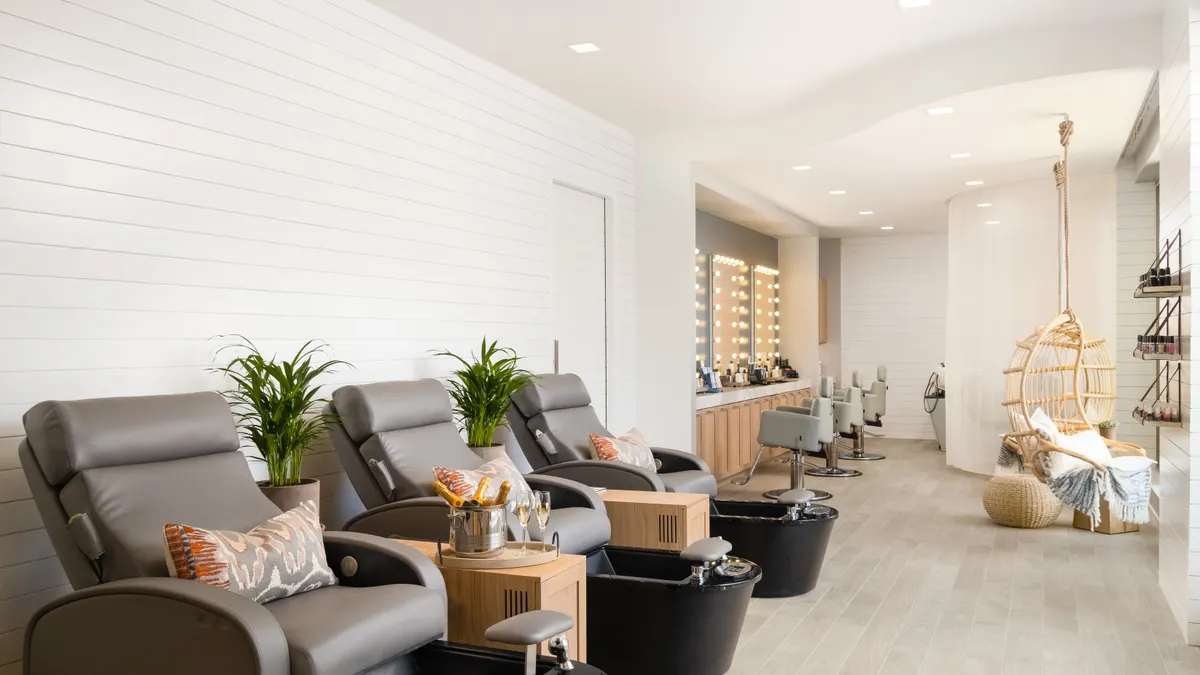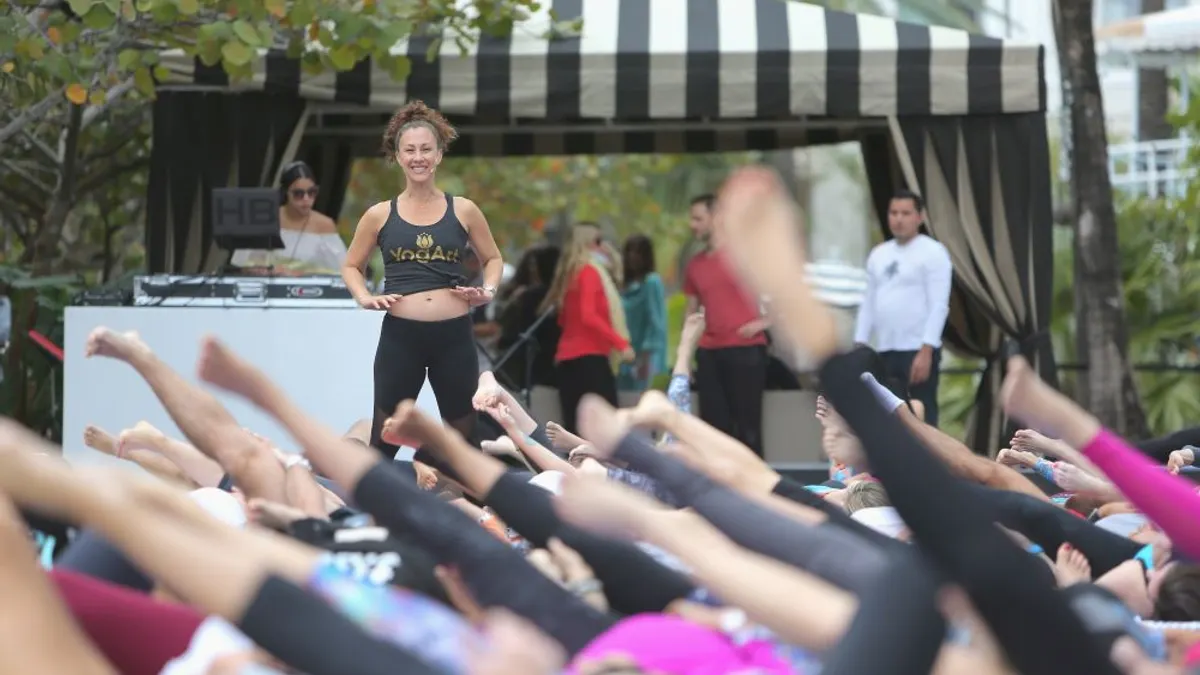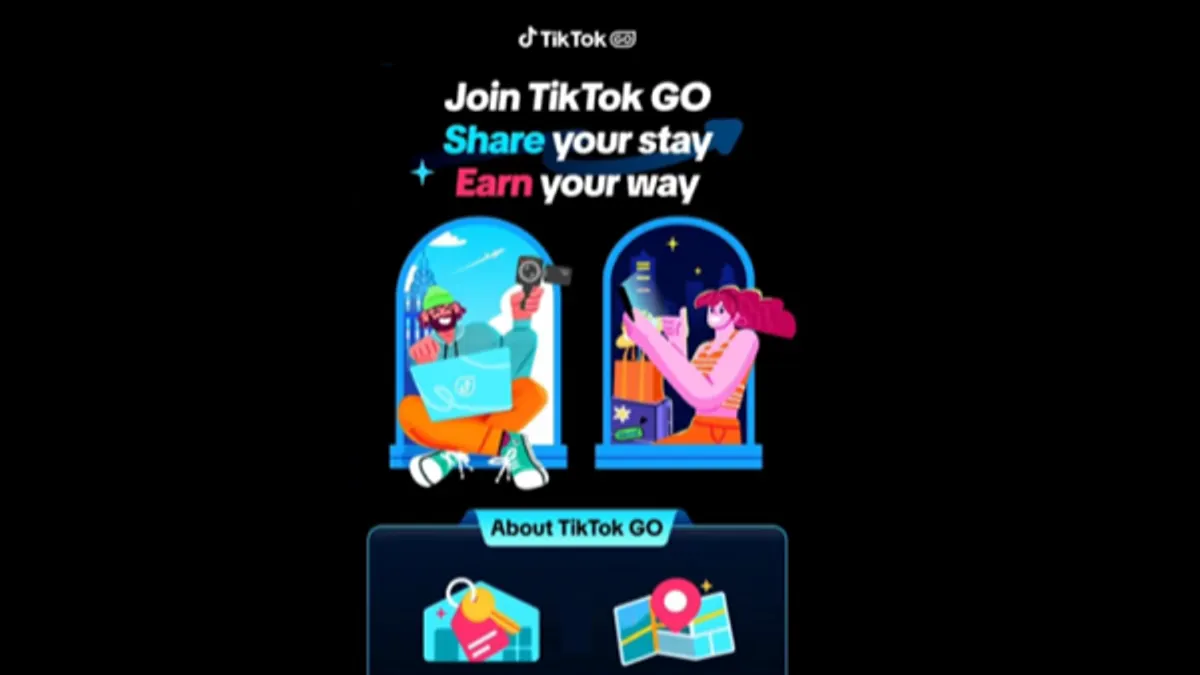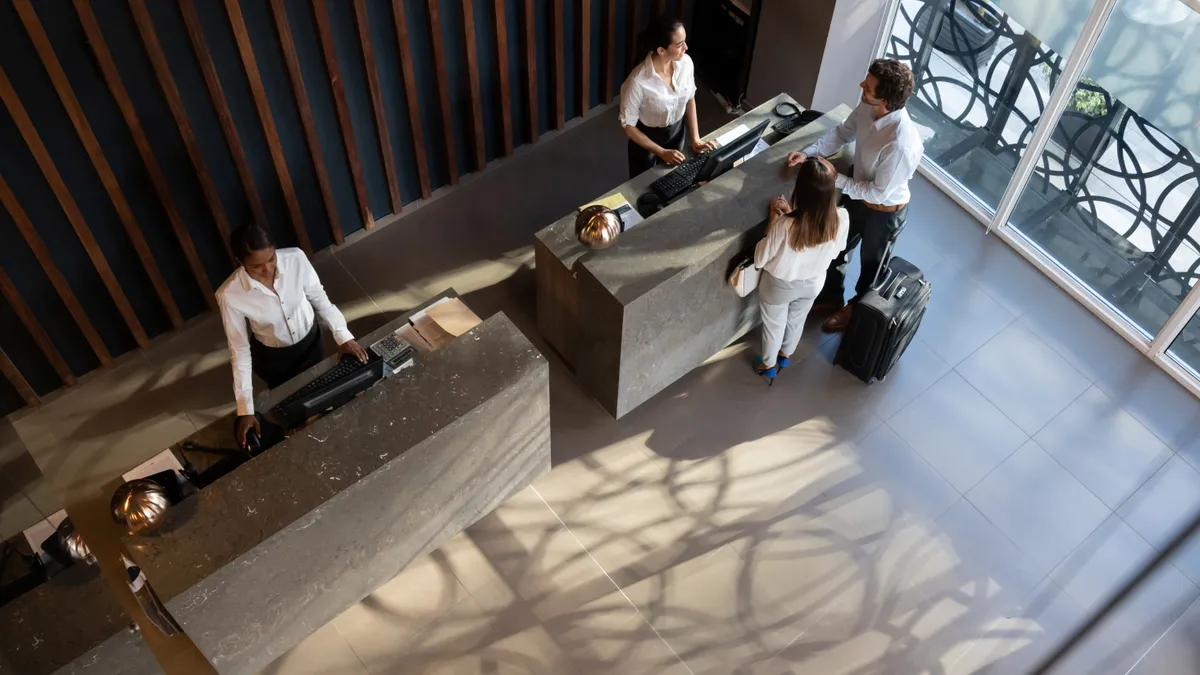Hotel Tech-in is our regular feature that takes a closer look at emerging technology in the hospitality industry.
At the Renaissance Las Vegas Hotel, there are two assistants named Elvis and Priscilla.
Elvis and Priscilla pick up orders from the front desk and deliver them to guests. They show up at guests’ rooms when they ask for more towels or toilet paper. They bring Wi-Fi into zones with no service, and they even go into “mingle” mode.
The thing about Elvis and Priscilla, though, is that they’re robots. And despite the fact that they lack a pulse, guests still love their service. “[I] had an awesome robot deliver my room service,” reads one Yelp review. “So fun to have robots deliver things to the room,” reads another.
“I think the biggest surprise to me [...] is the emotional connection that guests and staff alike have with the robots,” Michael O’Donnell, CEO of Relay Robotics, told Hotel Dive. The San Jose, California-based company has been putting robots — which serve as everything from assistants to entertainment — in hotels since 2014.
In the years since, the robots have joined hotels by Marriott, Hilton, IHG and Wyndham across the country. And they’ve undergone several upgrades. The most recent: the newly launched Relay 2, which offers a 10-gallon payload for even bigger deliveries.
The company says its robots have completed over one million deliveries to date worldwide.
While these butlers-on-wheels may have raised eyebrows at first, they’ve proved successful enough that Relay is moving past the introductory phase into what O’Donnell calls “full-on growth mode.”
The case for robots
O’Donnell said Relay robots don’t replace staffers; they make staffers’ jobs more efficient — particularly as many are facing longer hours and heavier workloads amid the hotel industry’s labor shortage.
“Even a full-service hotel may only have one person working behind the front desk at night,” he said. “And what do you do when someone calls for more towels or something to eat? Do you shut the front desk down, or lock the front door, and go up to make a delivery?”
Deliveries have become more common in recent years, as guests increasingly opt for takeout options. Some hotel chains have capitalized on this trend: Last month, Grubhub entered into a partnership with roughly 500 of Hilton’s Homewood Suites to streamline deliveries to the hotel chain’s guests. Marriott offers extra Marriott Bonvoy points to guests ordering via Uber Eats, and DoorDash has partnered with Wyndham. Chip Rogers, president and CEO of the American Hotel and Lodging Association, previously told Hotel Dive that “Americans became extremely comfortable during the pandemic about getting food delivered to them, and this has transferred its way into the hotel industry.”
The Relay 2, which was designed with hotelier feedback in mind, helps hotel staff deliver larger food deliveries. “We just did a trial with lunch for, like, eight people,” O’Donnell said. “And [the robots] can do it.”
He added that the robots keep non-guests out of the hotels’ properties too, by replacing the need for delivery drivers to deliver to hotel rooms themselves.
The robots can ride elevators by themselves, and when they arrive at guests’ rooms, open their own compartments to allow guests to grab their food.
While deliveries are a cornerstone of the robots’ service, they’ve been used for a variety of purposes — and in a variety of hotels.
“What's interesting is it's really a cross section of high-end to lower-end,” O’Donnell said. Higher-end hotels often use them as an amenity to enhance the guest experience — O’Donnell noted one that delivers plush toys to children — whereas those on the economy end often see the robots as “a key, integral member of the staff,” he said.
What robots are used for differs by property, but most hotels that use them have one or two. Some of them prompt guests for hotel feedback on their stay after making a delivery, allowing managers to then address any concerns. Other hotels use robots to deliver goods from their on-property marketplaces or to “greet” guests in the lobby.
How it works
Relay’s model is subscription-based. O’Donnell said it’s a monthly fee that usually works out to $75,000 over three years, with all maintenance and support costs included.
When a hotel manager decides to make the investment, Relay works with the property to map it for the robots and train staff on how to use them. Then, Relay pivots to liaising primarily with the companies that run and maintain hotels’ facilities.
“Who we really work with are the service companies,” O’Donnell said, noting Relay works frequently with elevator operators to ensure their robots have a smooth ride.
O’Donnell expects Relay’s product line will expand as it continues to refine and develop technologies. There are possibilities for restaurant-focused robots with the ability to open shelves, bigger robots to carry even larger deliveries and, of course, vacuuming robots, which are already popular in homes. “We're looking at all those different types of robots,” he said.
As robots that can make deliveries and navigate complex facilities on their own, Relay’s robots have a lot of potential use cases. The company does operate robots in one other field, healthcare, where their sterile nature and increasingly large payloads come in handy.
Hospitality, though, remains core to the company’s mission. O’Donnell credited the robots’ popularity in hotels to “a perfect storm of a huge market, technology getting really good and hoteliers dealing with his labor shortage.”
“It just made a lot of sense,” O’Donnell said.



